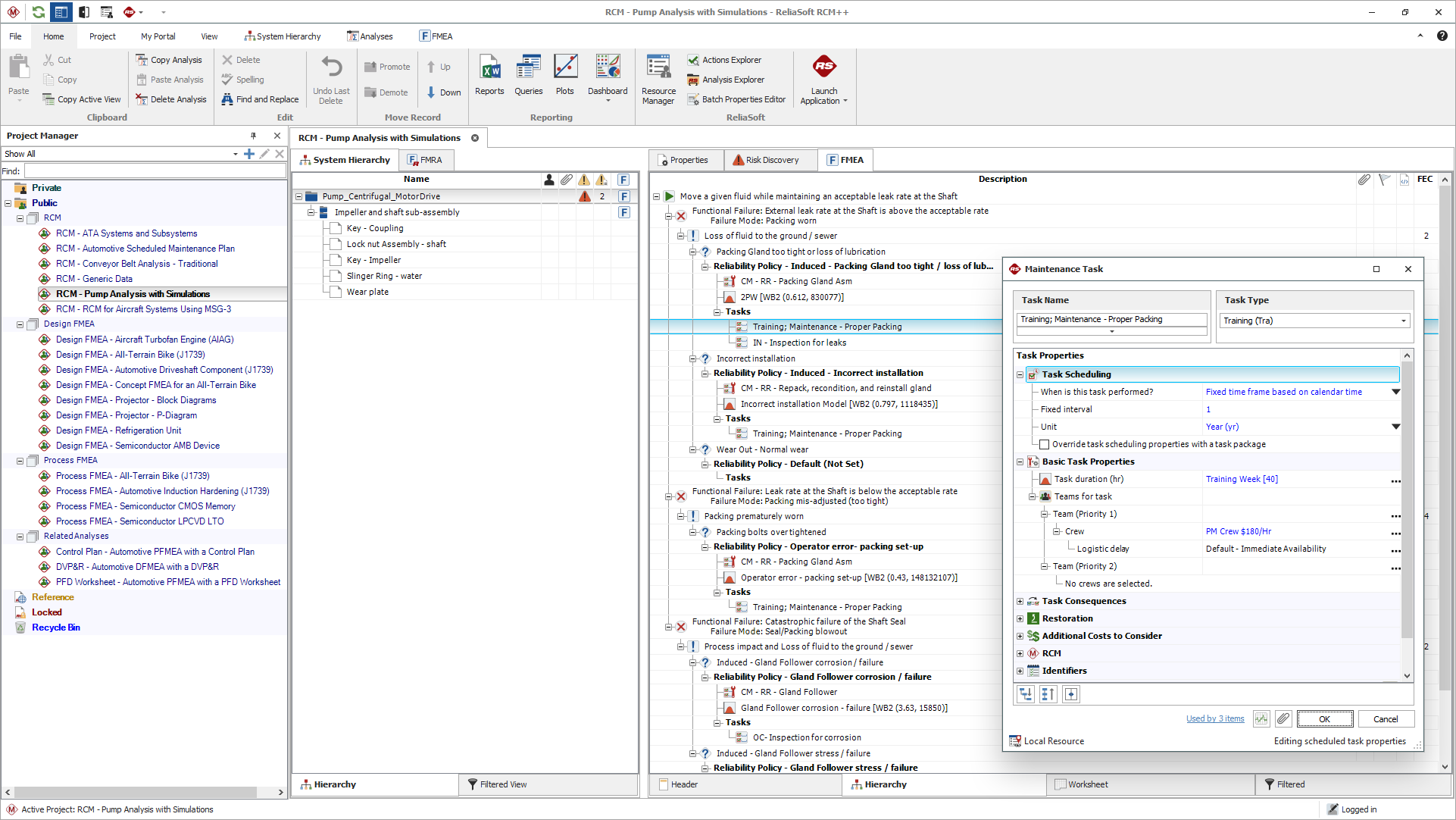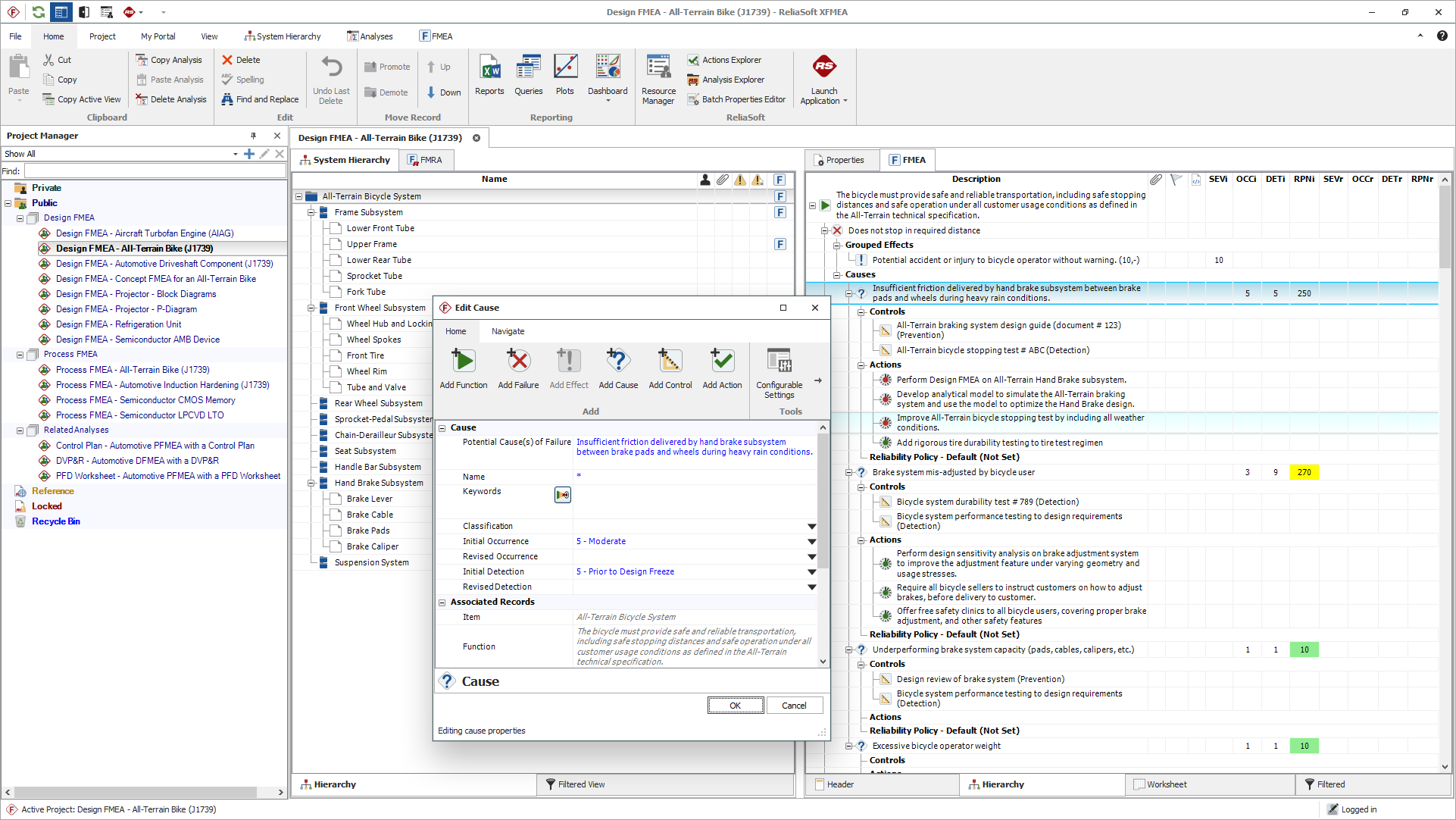Reliability Centered Maintenance (RCM) analysis
Equipment selection
In order to focus resources where they can provide the greatest benefit, the Risk Discovery Analysis feature provides a choice of two configurable methods to determine which equipment will be analyzed with RCM techniques.
Functional failure analysis
The Analysis panel makes it easy to switch back and forth between three complementary views of the functional failure analysis information so you can choose the display that is best suited for your current activity.
- The FMEA Hierarchy displays a lot of information in a compact space, where you can choose to display and enter causes before effects, if desired.
- The Worksheet View allows you to type directly in the worksheet cells and tab through the analysis as you would in a spreadsheet application such as Microsoft Excel.
- The Filtered View allows you to generate sortable lists of records of a type. For example, you may wish to see maintenance task records sorted by type, assigned interval, duration or cost.
Failure effect categorization and maintenance task selection
RCM++ supports the failure effect categorization (FEC) and maintenance task selection logic charts in the major industry RCM standards. You also have the option to customize the questions, categories and task types to fit your own specific analysis procedures.These configurable logic diagrams can help guide the analysis team to discuss the consequences of potential failure modes and consider the maintenance strategy that will be most applicable and effective.
Task packaging
It is easy to group individual tasks into packages based on factors such as time (scheduled interval), task type and areas in the system where tasks are performed. You can manually assign a task to the appropriate maintenance package or allow the software to automatically group tasks based on the criteria that you have specified for each package.



